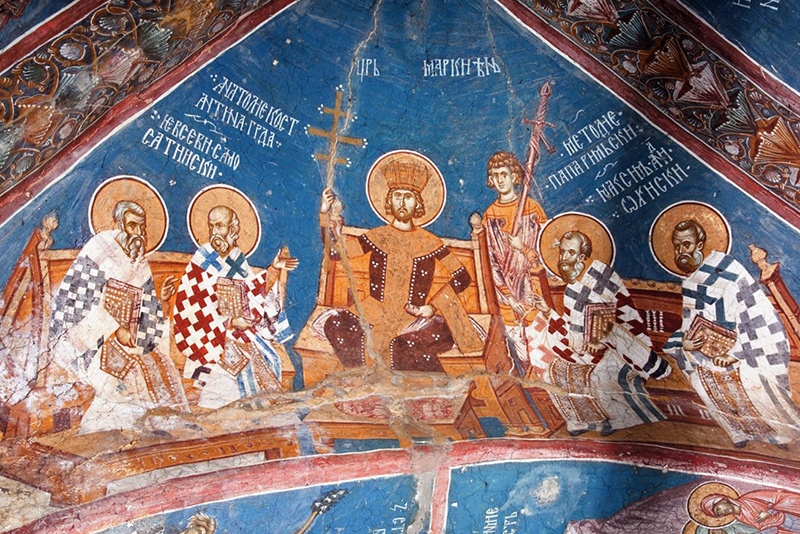
Has the Eighth Ecumenical Council already taken place?
If you ask virtually any Orthodox Christian how many Ecumenical Councils there were in the church, without hesitation he or she will answer that there were seven of them. Is everything really that simple in reality or, perhaps, dogmatic textbooks oversimplify things? Was there really no need after the Seventh Ecumenical Council to resolve serious church questions, the answers to which were awaited by the holy church in all its entirety? Below are the major facts related to the fourth Council of Constantinople in 880 called by some of the fathers the Eighth Ecumenical Council.
The need for a new Council
The convening of this Council took place in times when relations between Rome and Constantinople were quite tense. Ten years earlier, a Council of 869 was held in Constantinople, condemning St. Photius and his supporters for the proclamation of anathema against the Pope. Patriarch Ignatius, the opponent of Photius ascended the throne of New Rome again. Rome supported Ignatius and demanded that all the clergy of Constantinople sign a written expression of loyalty to the Pope (libellus satisfactionis), which caused discontent in the East. This factor along with others shook the church organism. It was necessary to convene a new general Council that would restore peace among the divided clergy of Constantinople and fixes the relations with the Old Rome.
Ecumenicity of the Council
In 877, Patriarch Ignatius died and Photius was re-elected in his place. Pope John VIII, convened a council in Rome and recognized Photius as the new patriarch of Constantinople, subject to his reconciliation with the Ignatians and the cessation of missionary activity in Bulgaria, which was considered the territory of Rome. The opportunity arose to convene the Ecumenical Council, which took place in Hagia Sophia Church in 879-880. The council was quite high in attendance (383 bishops). It was attended by representatives of all 5 patriarchates, which gave it the right to be called Ecumenical.
Affirmation of the seventh Ecumenical Council
In general, the Council passed in a rather constructive manner. At the end of the first session, the legates presented St. Photios gifts from the Pope including a pallium (omophorion), a casula (phaelonion), an alb (surplice), and distinct shoes in recognition of Photius’ patriarchal dignity (Mansi. T. 17. Col. 389). The fourth meeting, amid general jubilation, canceled the decrees passed by the previous Council of 869 deposing Patriarch Photius, while its fifth meeting went down in history by the proposal made by St. Photius affirming the authority of the 787 Council and numbering it among the Ecumenical Councils. The case is that according to the Orthodox tradition, recorded in the acts of the Ecumenical Councils, it was the subsequent great Council that assigned a serial number to the previous Ecumenical Council as if once again confirming its authority. It was the Council of 880 that recognized the 7th Ecumenical Council against the Iconoclasts, which also confirms the ecumenical significance of the Photian Council. Here also lies a possible answer why the fourth Council of Constantinople was never officially called the 8th Ecumenical Council. In fact, it was the last, Great Council attended by all five patriarchates, including the Roman. Only the next Great Council could have affirmed it as the 8th Ecumenical, but no other great Council was destined to take place before the Great Schism.
Denouncing the insertion of Filioque into the Symbol
One of the last meetings condemned any addition to the Creed, which implied denouncing the insertion of the Filioque into the Nicene-Constantinople Creed. This decision was signed by the Roman legates. Until recently, in the Catholic history of councils, it was believed that Pope John VIII, having learned about this act of the legates, excommunicated them and once again broke all ties with New Rome. However, recent studies by Catholic historians (Dvornik F. The Photian Schism: History and Legend. Camb., 1948) indicate the opposite. The Frankish idea of adding a Filioque to the Creed was condemned in Rome, whereas the relations between the Roman Church and Constantinople had not been interrupted apparently for more than a hundred years following 880.
Summing up what has been said, the fourth Council of Constantinople can rightfully be called the eighth Ecumenical Council, because it was the last Council of all 5 patriarchates, which healed the disorders within the Church of Constantinople and reconciled the New Rome with the Old. An important fact is the conciliar condemnation of any insertion into the Creed as one of the keys to Christian unity. The rules of the Council are still included in the canonical collections of the Orthodox Church and placed immediately after the rules of the 7th Council. The Catholic Church considers the Council of 869condemning Photius to be the 8th Ecumenical Council while the 1848 Encyclical of the Eastern Patriarchs, following the authority of St Symeon of Thessalonica and St Nicholas Cabasilas, directly calls the Council of 880 the 8th Ecumenical, and notes that correct attitude towards it “could in our time greatly contribute to the resolution of the conflict between East and West” (Archpriest John Meyendorff, Living Tradition).




